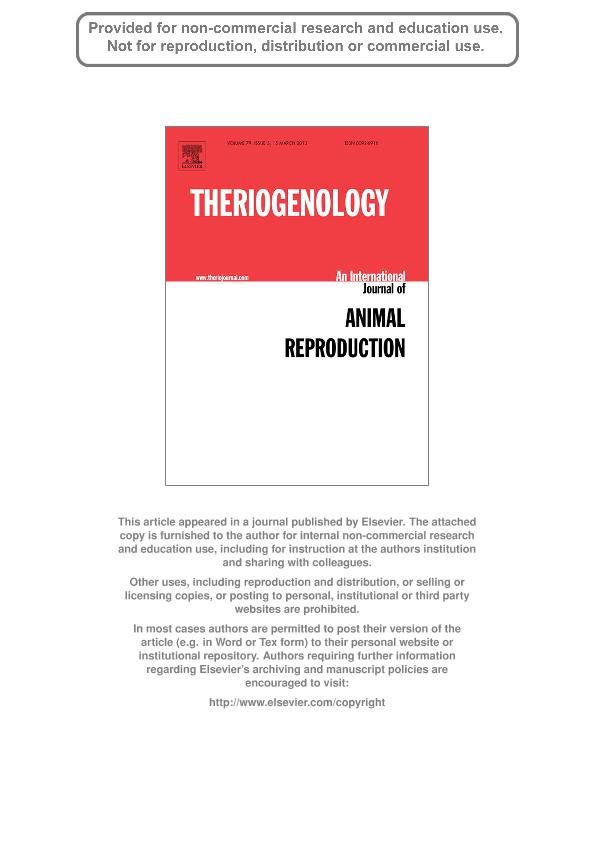Artículo
Some factors affecting the number of days open in Argentinean dairy herds
Fecha de publicación:
03/2013
Editorial:
Elsevier Science Inc.
Revista:
Theriogenology
ISSN:
0093-691X
Idioma:
Inglés
Tipo de recurso:
Artículo publicado
Clasificación temática:
Resumen
The objective of this study was to estimate the relative contribution of factors affecting how quickly cattle become pregnant in Argentine dairy herds. Data from 76,401 cows from 249 dairy herds were analyzed. A hazard model was used to explore days open (DO). The factors considered were milk yield, lactation number, calving season, and breeding technique (i.e., type of service: artificial insemination [AI], or combined service). Cows with lower milk yield had 1.09 to 1.38 higher likelihood to become pregnant than those with higher milk yield (P < 0.0001). The number of DO increased linearly with an increasing number of lactations (P < 0.0001). Cows calving in fall-winter had a shorter interval to conception than those calving in summer. The hazard rate for combined service was 1.27; therefore, cows with combined service were more likely to become pregnant during the observation period than those bred by AI. The difference in DO between cows of high versus low milk yield was smaller when dairies used AI as the main breeding technique than when they used combined service. Furthermore, dairies using mainly combined service had lower milk yield (5693.7 L) than those using mainly AI (7684.4 L). Although lactation number and calving season contributed to explain the number of DO, the influence of production level, the type of service, and the interaction between them was also associated with reproductive efficiency in Argentine dairy herds.
Archivos asociados
Licencia
Identificadores
Colecciones
Articulos(CCT - CORDOBA)
Articulos de CTRO.CIENTIFICO TECNOL.CONICET - CORDOBA
Articulos de CTRO.CIENTIFICO TECNOL.CONICET - CORDOBA
Citación
Piccardi, Mónica Belén; Capitaine Funes, A.; Balzarini, Monica Graciela; Bo, Gabriel Amilcar; Some factors affecting the number of days open in Argentinean dairy herds; Elsevier Science Inc.; Theriogenology; 79; 5; 3-2013; 760-765
Compartir
Altmétricas




